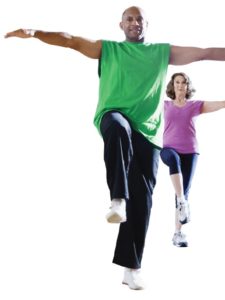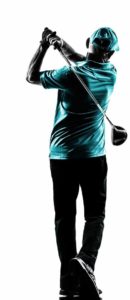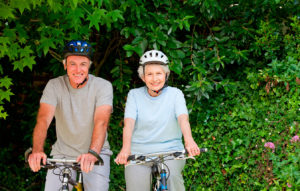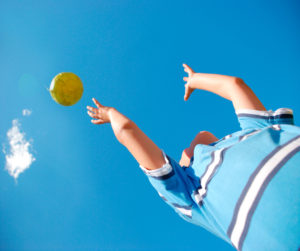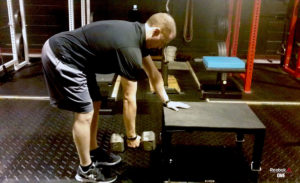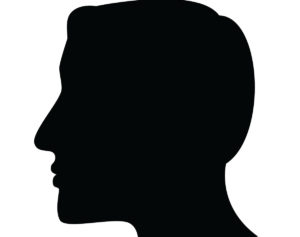Injury / Injury Prevention
Power Up to Prevent Injury
Participants rarely think about injuries until after they happen (hopefully not in your class!). But someone who needs rehabilitation may face a delay in meeting fitness goals. Another issue: Our group fitness studios are filling with people of many different ages and abilities.
7 Principles for Outstanding Boomer Workouts
Do you teach or train generally healthy, moderate- to high-functioning baby boomers? Or are you thinking of directing more of your efforts to exercisers over 50? If so, be among the first to learn targeted principles you can weave into clients' or class participants' workouts.
Whether you're a small-class leader, a one-on-one trainer or a group fitness instructor, applying seven specific principles will allow you to offer the most effective sessions for midlifers and older boomers.
Corrective Exercise for Foot, Ankle, Knee and Back Pain – Calf Stretch on BOSU
Activities such as walking, squatting or lunging require coordinated movement. The ankles must be able to bend to allow the legs to come forward over the feet, and the knees to bend when squatting or lunging. Restricted motion in an ankle can cause pain and dysfunction to any number of bodily structures as they compensate.
How to Help Golfers Improve Scores, Boost Performance, and Prevent Injuries
The key to understand the biomechanics of body rotation.
Aerobic Fitness May Preserve Brain’s Youthfulness
Physical fitness may do more than preserve a more youthful body; it may also impact the brain’s activity and function, preserving more youthful mental capabilities, according to findings published in NeuroImage (2015; doi: 10.1016/j.neuroimage.2015.09.062).
University of Tsukuba researchers in Japan found that fitter older men performed better mentally than less fit older men, by solving problems in the same way younger brains would do.
20 Minutes a Day Keeps the Heart Doctor Away
To reduce heart failure risk by exercising, remember Goldilocks and avoid extremes, suggests a new study. It found that neither low nor high levels of physical activity were as effective as moderate amounts for warding off heart failure.
The researchers gathered self-reported data on physical activity (type and duration) for 33,012 men from 1998 to 2012. Subjects’ average age at baseline was 60 ± 9. The scientists compared that information against heart failure incidence from the Swedish National Patient Register and Cause of Death Register.
Great Exercises for Older Caregivers
Adults over 50 who are caring for aging parents are not like other fitness clients of similar age.
For starters, caregivers tend to be less healthy. A study by the insurance company MetLife noted that “adult children 50+ who work and provide care to a parent are more likely to have fair or poor health than those who do not provide care to their parents” (MetLife 2011). Another study showed that 17% of caregivers felt their health had gotten worse as a result of their caregiving responsibilities (Feinberg et al. 2011).
“Do your clients perform stretches before a workout, or do they do a dynamic warm-up and then static stretching at the end?”
We do a dynamic warm-up to raise body temperature, which raises heart rate and increases circulation to muscles, tendons and ligaments. A dynamic warm-up also helps prepare the mind and body for the upcoming workout, enhances performance and reduces injuries.
I even use dynamic warm-ups when I teach yoga. Most Baby Boomers (and I am one of them) need dynamic warm-ups.
Help Students With “Tech Neck”
Have you noticed an increase in postural deviations among your students? In today’s society, “tech neck” is becoming more common—we all spend too much time looking down at our devices. This requires rounding the shoulders (rather than keeping them back and down, with chest open) and jutting the head forward. The position is becoming so habitual for a lot of people that it feels fixed and “natural” to them. Help participants become more aware of this uncomfortable trend and empower them to make better choices.
The Impact of Chronic Pain
Use a three-pronged approach to help frail participants move better, get
stronger and improve their balance.
Did you know that more than 45% of Americans experience pain on a
regular basis? Are you one of them? Unfortunately, people tend to fall
into bad habits as the body adapts to, and becomes familiar with,
persistent pain (Duhigg 2012).
Is Tart Cherry Juice the New Super Recovery Drink?
Emerging research suggests tart cherry juice has a unique blend of
powerful anti-inflammatory and antioxidant agents that help athletes and
exercise enthusiasts recover faster from exhaustive exercise. This
discovery is attracting growing interest among fitness professionals.
Cut Postmenopausal Breast Cancer Risk
How much exercise is needed to reduce body fat—a known breast cancer risk factor—in postmenopausal women? That’s the question researchers explored in a study published in JAMA Oncology (2015; doi:10.1001/jamaon col.2015.2239).
Are Pilates and Yoga Right for Clients With Low Bone Density?
After working with an older adult (aged 82–92) for 10 years, I was troubled to discover that she had begun having difficulty getting out of the waiting room chair before embarking on our weekly Pilates session. What was I missing? She had faithfully completed Reformer Footwork, Eve’s Lunge and Side Splits, as well as Standing Leg Pumps on the Wunda chair, each week. Why was she continuing to lose leg strength?
Is There a Right or Wrong Way to Squat?
“Hey, keep your knees behind your toes when you squat!” “Deep squats are bad
for the knees!” “My doctor told me I should not squat anymore.” “You
should never let the knees cave in or out during a squat.” Chances are
you’ve heard this advice and maybe even given it to your clients. I know
that for many years in my career I’ve been guilty of making similar
recommendations to clients from all walks of life. The problem is, where
Physical Literacy for Kids
Health and fitness professionals are important players in a nationwide movement to promote and support physical literacy, which in turn will help to set the stage for a healthier, more active, more productive generation of children
hey’re doing either too little or too much.
For U.S. youth, that’s the stark paradox of physical activity. While
more than half of adolescents fail to accumulate the recommended 60
minutes of exercise at least 5 days per week (CDC 2015), many young
athletes are becoming specialized too early in life, which fosters a
culture of elite sports that discourages broad participation.
Sample External Cues
If you’re not getting through to clients, it’s tempting to conclude that they are simply not paying attention. Yet extensive research on training and coaching suggests another possibility—you may not be using the right cues to optimize your clients’ attentional focus. Studies tell us the right kind of attentional focus helps people improve, while the wrong kind can impede progress. ?
Row the Right Way
We can all assume that we know how to row, but if you’re serious about getting strong while keeping your shoulders healthy, you may just want to read this. Mike Robertson, ReebokONE Expert Contributor and President of Robertson Training Systems, breaks down the proper way to row.
Yoga for Neck and Shoulder Pain
In our high-stress, hurried world—filled with financial pressures, information overload, “terror alerts” and sleeplessness—many people feel the weight of the world on their shoulders. Add to this emotional tension the physical stress of sedentary lifestyles with long hours spent hunched over computers and, all too often, the result is a serious pain in the neck.
Chronic Pain in Fitness Professionals
An Objective Eye
It can be difficult to take a step back and be objective when it comes to your own health. Katy Bowman, MS, director of the Restorative Exercise Institute in Ventura, California, and author
of Move Your DNA: Restore Your Health Through Natural Movement (Propriometrics Press 2014), suggests you write down
the following:
Profiles of Pain and Perseverance
In February 2006, Danny Strong was on top of the world. After years of working as a gym manager, he had opened his own personal training gym, making his dream a reality. The husband and father was also eager to welcome a second child into the family. A month after receiving the keys to his new facility, he took his family on a trip to visit his godmother. While on the road, Strong lost control of his vehicle and was hit by a tractor-trailer traveling at full speed. His pregnant wife, Sandra Urbano Strong, was killed instantly.
